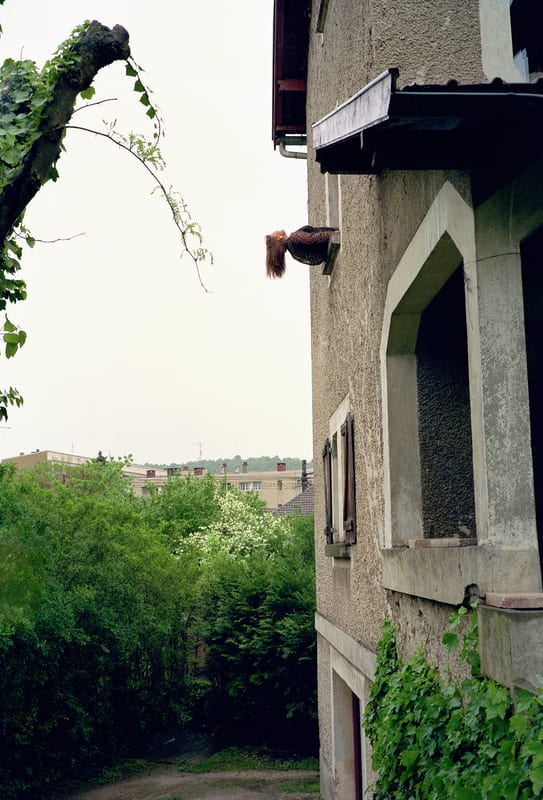Erwin Wurm
(Bruck an der Mur, Austria, 1954 - )
Outdoor Sculpture
From the series "Cahors"
1999
C-print on aluminum
48 x 32 in. (121.9 x 81.3 cm)
Collection of the Akron Art Museum
Gift of Cathy and Michael Casteel
2025.1
Courtesy the artist and Lehmann Maupin, New York, Hong Kong, and Seoul
More Information
'Outdoor Sculpture' (from the Cahors Series) is a large photograph featuring green trees and climbing ivy in the foreground, and historic buildings in the background. The right half of the composition is a historic building in Cahors, France. There is a small figure leaning backwards out of a window, with their hair flowing straight downward. The pose is very unnatural, and could not be held for very long. To the left there is a tree with climbing ivy that seems to point downward to the human figure. The sky is white. 'Outdoor Sculpture' (from the Cahors Series) showcases the characteristic sense of humor that the artist is known for, which is presented in a subtler composition than many of his other works. The artist himself has characterized this work as part of the series “Photographic Sculptures.”3 In many other photographs from Wurm’s wider body of work, the human figure is central in the composition. This tendency spans his “One Minute Sculptures,” “Word Sculptures,” and “Photographic Sculptures,” including numerous and distinct internal sub-series within each. However, several works in the “Cahors Series”—including this one—are more subtle. At first glance, viewers might mistake this for a more traditional landscape photograph featuring historic architecture. The human figure is small and easy to miss at first glance. The figure is suspended out of the window of a historic building in a pose that would be clearly uncomfortable but unmistakably intentional. When the figure is noticed, it makes viewers recontextualize the whole composition and the artwork’s title. This photograph is one of the many compositions in which Wurm investigates the basic qualities of sculpture: volume, space, and the possibility of interaction with the viewer. Wurm probes the physical relationship between human and object through unconventional posing, and this may lead viewers to question their perceptions of self and of their surroundings.

